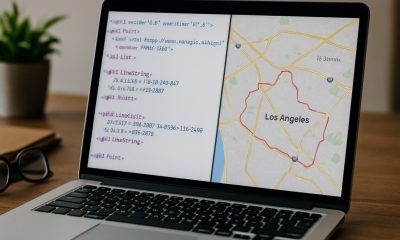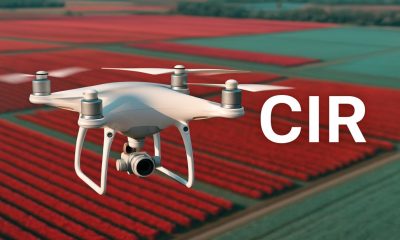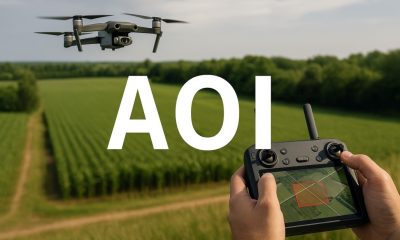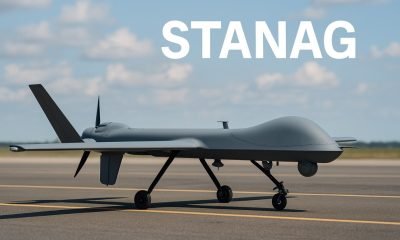- Acronym Guide
- AAM
- ABS
- AC
- ACAS
- ADS-B
- AFAC
- AGL
- AI
- AIM
- ALS
- AM
- AMA
- ANSP
- AOI
- APPI
- AUV
- AUVSI
- ARPAS-UK
- ASTM
- ATC
- BVLOS
- CAA
- CAAC
- CAB
- CASA
- CATT
- CBO
- CBR
- CBRN
- CDMA
- CDR
- CFR
- CIR
- COA
- COMINT
- CORS
- COTP
- COTR
- CPTED
- CV
- C2
- DAA
- DEM
- DFI
- DFS
- DGCA
- DHS
- DOD
- DPA
- DPEs
- DRG
- DRO
- DSM
- DSMX
- DSP
- DSSS
- DTM
- EASA
- EFT
- EO
- EOD
- EO/IR
- ELINT
- EMI
- ESC
- EVLOS
- eVTOLs
- FAA
- FCC
- FCS
- FHSS
- FICCI
- FLIR
- FOB
- FOV
- FPS
- FPV
- GBDAA
- GCP
- GCS
- GDPR
- GML
- GNSS
- GPS
- GSD
- GVC
- HDR
- HOGE
- IACRA
- ICAO
- ICS
- IMU
- INS
- IR
- ISA
- ISR
- ITU
- JARUS
- LAAMS
- LAANC
- LAATM
- LAI
- LBA
- LIDAR
- LOS
- LSALT
- MAC
- MAVLink
- MLIT
- MMS
- MSL
- MTOM
- NDAA
- NCSL
- NFZ
- NIST
- NMEA
- NOTAM
- NPA
- NPRM
- NTIA
- OBIA
- OEM
- OFDM
- OOP
- PASM
- PAV
- PCV
- PdM
- PEC
- PIC
- PID
- PIPL
- PLD
- PM
- PN
- PPK
- PPS
- PSM
- PWM
- UAM
- UAOP
- UAS
- UASTM
- UAV
- UCAVs
- UHD
- UHF
- USV
- UTM
- RAIM
- RCC
- RCS
- RFI
- ReOC
- RePL
- RMS
- ROI
- RPAS
- RPC
- RTH
- RTK
- SaR
- SAR
- SARP
- SBAS
- S.Bus
- SBIR
- SEDENA
- SfM
- SFOC
- SIGINT
- SLAM
- SMS
- SORA
- STANAG
- STTR
- sUAS
- TCAS
- TCCA
- TFR
- TIN
- TOF
- TP
- TPS
- TSA
- VHF
- VLOS
- VTOL
Drone Acronyms
What is EFT (Exemption for Flight Testing) & How Does it Work?
Published
1 month agoon
By
Jacob StonerTable Of Contents

Definition
EFT, or Exemption for Flight Testing, is a formal authorization granted by a national aviation authority (such as the FAA, Transport Canada, or EASA) that permits the experimental operation of unmanned aerial vehicles (UAVs) for research, development, or certification purposes. It allows drone manufacturers, developers, or advanced operators to conduct non-standard flights that would otherwise be restricted under current regulations.
Usage
EFTs are used during prototype trials, sensor integration testing, or experimental missions involving new technologies such as detect-and-avoid systems, autonomy stacks, or unique airframe designs. These exemptions are typically granted with specific limitations on altitude, location, airspace use, and duration, and often require real-time monitoring and post-flight reporting.
Relevance to the Industry
As UAV capabilities expand rapidly, EFTs play a critical role in enabling innovation. They allow developers to test new designs and systems before they are fully certified or commercially deployed. EFTs are especially important for companies working on BVLOS capabilities, drone delivery systems, swarming technology, and heavy-lift aircraft. Regulatory agencies rely on EFT data to inform future rulemaking and approve broader operational use cases.
How Does EFT (Exemption for Flight Testing) Work?
An Exemption for Flight Testing (EFT) allows developers to legally operate experimental drones outside standard regulatory limits for the purpose of research, validation, or performance evaluation. These exemptions are carefully structured to ensure safety while enabling technological advancement. Here’s how the process typically works:
Application to the Aviation Authority
The operator submits a detailed application to the relevant aviation regulator (e.g., FAA, Transport Canada, or EASA). This includes:
- Aircraft specifications and design documentation
- Proposed test objectives and scope
- Flight locations, altitudes, and risk assessments
- Safety protocols, including pilot qualifications and emergency procedures
Regulatory Review and Risk Assessment
The authority evaluates the request to determine if the proposed testing poses an acceptable level of risk. They may assess airframe integrity, control systems, detect-and-avoid capabilities, and containment strategies (e.g., geo-fencing, kill switches).
Issuance of Conditions and Limitations
If approved, the exemption comes with strict conditions, such as:
- Specific test zones (often remote or segregated airspace)
- Flight time limitations or daylight-only operation
- Real-time tracking requirements
- Limits on altitude, speed, or range
- Mandatory notice to airmen (NOTAM) filings for situational awareness
Execution of Test Flights
Flights are conducted by certified personnel with oversight. UAVs may transmit telemetry in real time to a control center or regulator. Ground observers or chase teams may also be required to monitor the operation.
Data Collection and Reporting
Test data—including flight logs, performance results, and any incidents—is collected and stored for review. In most EFT scenarios, the operator must submit post-flight reports that include:
- System behavior evaluations
- Any anomalies or malfunctions
- Compliance with EFT conditions
Iterative Testing and Approval Pathways
The data gathered during EFT operations may be used to improve drone design, validate systems, or support future certification. Authorities often use EFT results to shape regulatory paths for new drone categories or operational modes like autonomous BVLOS delivery or urban air mobility.
EFTs strike a balance between fostering innovation and ensuring public safety, giving drone developers a clear path to validate next-generation systems under real-world conditions.
Example in Use
“The startup secured an Exemption for Flight Testing (EFT) to evaluate its new electric VTOL drone in a rural airspace corridor under close monitoring.”
Frequently Asked Questions about EFT (Exemption for Flight Testing)
What kind of drone operations require an EFT?
Answer:
Testing drones that exceed current weight, speed, or range limits
Evaluating new autonomy software or AI-assisted systems
Flying prototypes that are not yet certified or registered
Performing sensor calibration or environmental stress tests
Who issues the exemption?
Answer:
Aviation authorities such as the FAA (U.S.), Transport Canada (Canada), EASA (Europe), or CASA (Australia) review and approve EFT applications, often in collaboration with aerospace safety boards or innovation divisions.
What are typical conditions attached to EFT approval?
Answer:
Flights must occur in designated airspace or test ranges
Real-time telemetry may be required by regulators
Emergency response plans must be in place
Detailed post-flight reports and analysis are usually mandatory
For examples of these acronyms visit our Industries page.
As the CEO of Flyeye.io, Jacob Stoner spearheads the company's operations with his extensive expertise in the drone industry. He is a licensed commercial drone operator in Canada, where he frequently conducts drone inspections. Jacob is a highly respected figure within his local drone community, where he indulges his passion for videography during his leisure time. Above all, Jacob's keen interest lies in the potential societal impact of drone technology advancements.











